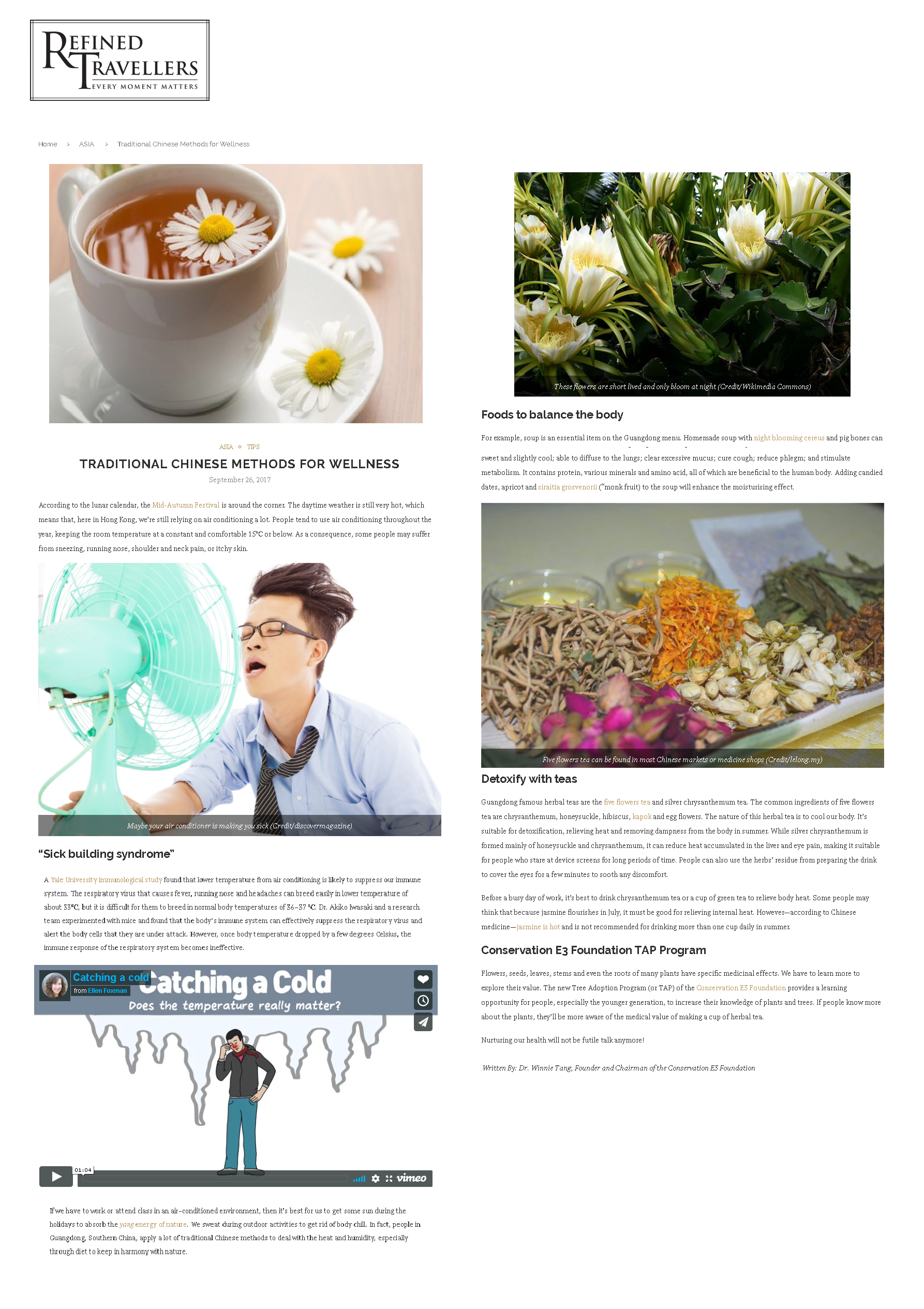網上版請按此

Traditional Chinese Methods For Wellness
According to the lunar calendar, the Mid-Autumn Festival is around the corner. The daytime weather is still very hot, which means that, here in Hong Kong, we’re still relying on air conditioning a lot. People tend to use air conditioning throughout the year, keeping the room temperature at a constant and comfortable 15℃ or below. As a consequence, some people may suffer from sneezing, running nose, shoulder and neck pain, or itchy skin.
“Sick building syndrome”
A Yale University immunological study found that lower temperature from air conditioning is likely to suppress our immune system. The respiratory virus that causes fever, running nose and headaches can breed easily in lower temperature of about 33℃, but it is difficult for them to breed in normal body temperatures of 36–37 ℃. Dr. Akiko Iwasaki and a research team experimented with mice and found that the body’s immune system can effectively suppress the respiratory virus and alert the body cells that they are under attack. However, once body temperature dropped by a few degrees Celsius, the immune response of the respiratory system becomes ineffective.
If we have to work or attend class in an air-conditioned environment, then it’s best for us to get some sun during the holidays to absorb the yang energy of nature. We sweat during outdoor activities to get rid of body chill. In fact, people in Guangdong, Southern China, apply a lot of traditional Chinese methods to deal with the heat and humidity, especially through diet to keep in harmony with nature.
Foods to balance the body
For example, soup is an essential item on the Guangdong menu. Homemade soup with night blooming cereus and pig bones can clear internal heat and moisturise from the lungs. Night blooming cereus is a cactus plant. Chinese medicine describes it as sweet and slightly cool; able to diffuse to the lungs; clear excessive mucus; cure cough; reduce phlegm; and stimulate metabolism. It contains protein, various minerals and amino acid, all of which are beneficial to the human body. Adding candied dates, apricot and siraitia grosvenorii (“monk fruit) to the soup will enhance the moisturising effect.
Detoxify with teas
Guangdong famous herbal teas are the five flowers tea and silver chrysanthemum tea. The common ingredients of five flowers tea are chrysanthemum, honeysuckle, hibiscus, kapok and egg flowers. The nature of this herbal tea is to cool our body. It’s suitable for detoxification, relieving heat and removing dampness from the body in summer. While silver chrysanthemum is formed mainly of honeysuckle and chrysanthemum, it can reduce heat accumulated in the liver and eye pain, making it suitable for people who stare at device screens for long periods of time. People can also use the herbs’ residue from preparing the drink to cover the eyes for a few minutes to sooth any discomfort.
Before a busy day of work, it’s best to drink chrysanthemum tea or a cup of green tea to relieve body heat. Some people may think that because jasmine flourishes in July, it must be good for relieving internal heat. However—according to Chinese medicine—jasmine is hot and is not recommended for drinking more than one cup daily in summer.
Conservation E3 Foundation TAP Program
Flowers, seeds, leaves, stems and even the roots of many plants have specific medicinal effects. We have to learn more to explore their value. The new Tree Adoption Program (or TAP) of the Conservation E3 Foundation provides a learning opportunity for people, especially the younger generation, to increase their knowledge of plants and trees. If people know more about the plants, they’ll be more aware of the medical value of making a cup of herbal tea.
Nurturing our health will not be futile talk anymore!
Dr. Winnie Tang
Founder and Chairman of the Conservation E3 Foundation